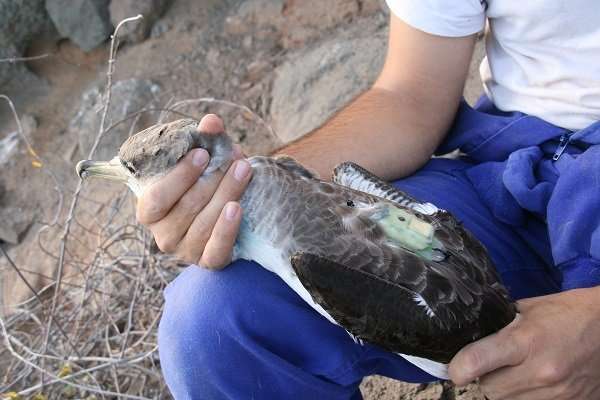Stopping the impact of fishing fleets on the most threatened marine birds

Accidental by-catch, which affects around 5,000 birds stuck in longlines every year, is the most severe effect on marine birds by the fishing activity in the Mediterranean. The exploitation of fishing resources threatens the future of many marine birds with regression populations, such as the Cory's shearwater or the Balearic shearwater.
Studying the interaction between marine birds and fishing activities in the peninsular Levant in Spain is the objective of a project coordinated by Jacob González-Solís of the University of Barcelona.
Marine birds, which are key elements in the trophic pyramid of oceanic ecosystems, are also bioindicators of the environmental quality of the marine environment. As adults, they can fly hundreds of kilometres seeking food, so their biological activity overlaps with the threats from fishing activities such as accidental by-catches and decline of the main fishing areas.
The new project, led by the experts from UB-IRBIO, will assess the most critical factors of the interaction in space and time between marine birds and fishing fleets over the Levant coast, from Andalusia to Catalonia and the Balearic Islands. This initiative will help them to see the efficiency of the Spanish Network of Marine Protected Areas (RAMPE), which covers several protection figures to preserve the marine natural heritage. Its aim is to improve the protection of marine birds in the peninsular coast.
The routes, distribution, and behaviour of marine birds can be studied in detail thanks to global positioning systems (GPS). This project will combine the information from the global positioning systems of the Spanish fishing fleet with the database of the UB-IRBio team on the habitat and ecology of Cory's shearwater (Calonectris diomedea), the Balearic shearwater (Puffinus mauretanicus), the Yelkouan shearwater (Puffinus yelkouan), Audouin's gull (Larus audouinii), and the Yellow-legged gull (L michahellis). They will also use the GPS and GLS technology in 2018 to study the movements of the Cory's shearwater from their breeding colonies –in particular, the Balearic Islands, Castelló, Murcia and Almería- to the main feeding areas during their breeding season, a key period in the species' annual cycle.
Jacob González-Solís says, "Knowing in detail the rhythm of the activities of these birds will help us determine the profile of their natural habitat and to find the most sensitive areas for the preservation of these species."
In this context, he continues, "the new project will be determining to study the kind and degree of interaction between pelagic birds and fishing fleet, and to identify the main factors that modulate this interrelation."
Provided by University of Barcelona




















